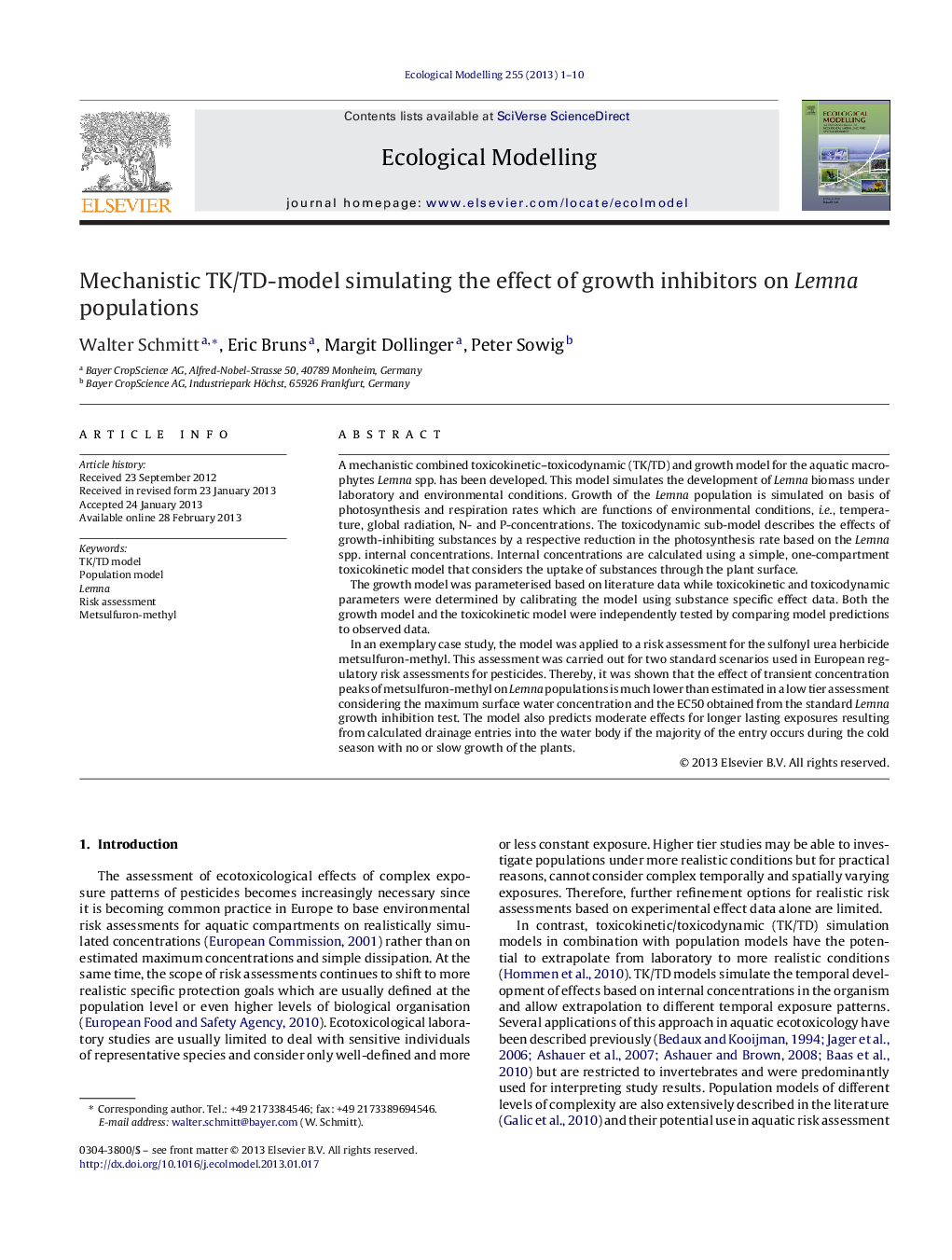| Article ID | Journal | Published Year | Pages | File Type |
|---|---|---|---|---|
| 4376114 | Ecological Modelling | 2013 | 10 Pages |
A mechanistic combined toxicokinetic–toxicodynamic (TK/TD) and growth model for the aquatic macrophytes Lemna spp. has been developed. This model simulates the development of Lemna biomass under laboratory and environmental conditions. Growth of the Lemna population is simulated on basis of photosynthesis and respiration rates which are functions of environmental conditions, i.e., temperature, global radiation, N- and P-concentrations. The toxicodynamic sub-model describes the effects of growth-inhibiting substances by a respective reduction in the photosynthesis rate based on the Lemna spp. internal concentrations. Internal concentrations are calculated using a simple, one-compartment toxicokinetic model that considers the uptake of substances through the plant surface.The growth model was parameterised based on literature data while toxicokinetic and toxicodynamic parameters were determined by calibrating the model using substance specific effect data. Both the growth model and the toxicokinetic model were independently tested by comparing model predictions to observed data.In an exemplary case study, the model was applied to a risk assessment for the sulfonyl urea herbicide metsulfuron-methyl. This assessment was carried out for two standard scenarios used in European regulatory risk assessments for pesticides. Thereby, it was shown that the effect of transient concentration peaks of metsulfuron-methyl on Lemna populations is much lower than estimated in a low tier assessment considering the maximum surface water concentration and the EC50 obtained from the standard Lemna growth inhibition test. The model also predicts moderate effects for longer lasting exposures resulting from calculated drainage entries into the water body if the majority of the entry occurs during the cold season with no or slow growth of the plants.
► A novel TK/TD model for Lemna was developed. ► Effects of growth inhibiting substances are assessable under environmental conditions. ► The model allows prediction of effects under temporally variable exposure. ► Model simulations can be considered in risk assessments like virtual experiments. ► Transient exposure to metsulfuron-methyl causes comparably small effects.
